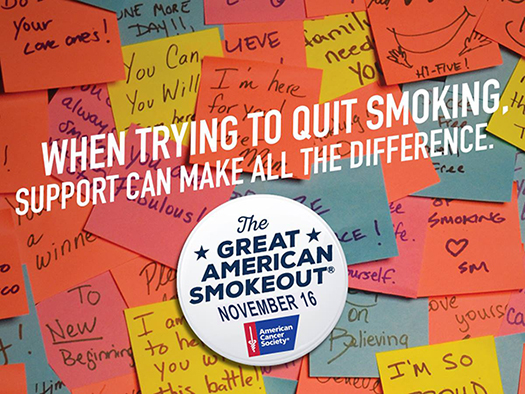News and Events
Cross City Nursing & Rehabilitation to Celebrate the annual Great American Smokeout
November 6, 2017
Cross City, Fla. – A local workplace is making big strides in supporting the health and well-being of their employees by adopting tobacco free workplaces. On Friday, November 17, 2017 the Cross City Nursing and Rehabilitation Center will be celebrating the health of their employees, residents and visitors on the National Tobacco Control Observance, the Great American Smoke-Out.

Cross City Nursing Home and Rehabilitation Center went tobacco free in October after providing free cessation resources to their employees and residents. They’ve provided on-site classes for their employees, many of whom have successfully quit smoking.
The free Quit Your Way program allows employees to call, go online, or even attend face-to-face cessation classes, many of which have been hosted at their places of employment in order to support tobacco cessation efforts.
One of the primary reasons an employer chooses to adopt a tobacco free workplace is the high cost associated with tobacco use at work. Pack-a-day smokers are estimated to have 75% more lost productive time during the work day than their non-smoking co-workers, and healthcare costs are an average of 34% higher than those who do not use tobacco. In Florida, the average loss in productivity annually for a tobacco user at the workplace is $4,056. The average extra medical expense for tobacco users is $2,056.*
Tobacco Free Grounds policies also support employees in their attempts to quit, helping them to change their habits and avoid temptations to smoke.
For more information about adopting a tobacco free workplace, visit www.TFP-Dixie.org or contact manderson@quitdoc.com. To learn more about the Quit Your Way program, visit TobaccoFreeFlorida.com/QuitYourWay.
____________________________________________________________________
* Berman M., Crane R., Seiber E., & Munur M. (2013). Estimating the cost of a smoking employee. Tobacco Control. Advance online publication. doi: 10.1136/tobaccocontrol-2012-050888



 RSVP at info@tfp-dixie.org
RSVP at info@tfp-dixie.org 